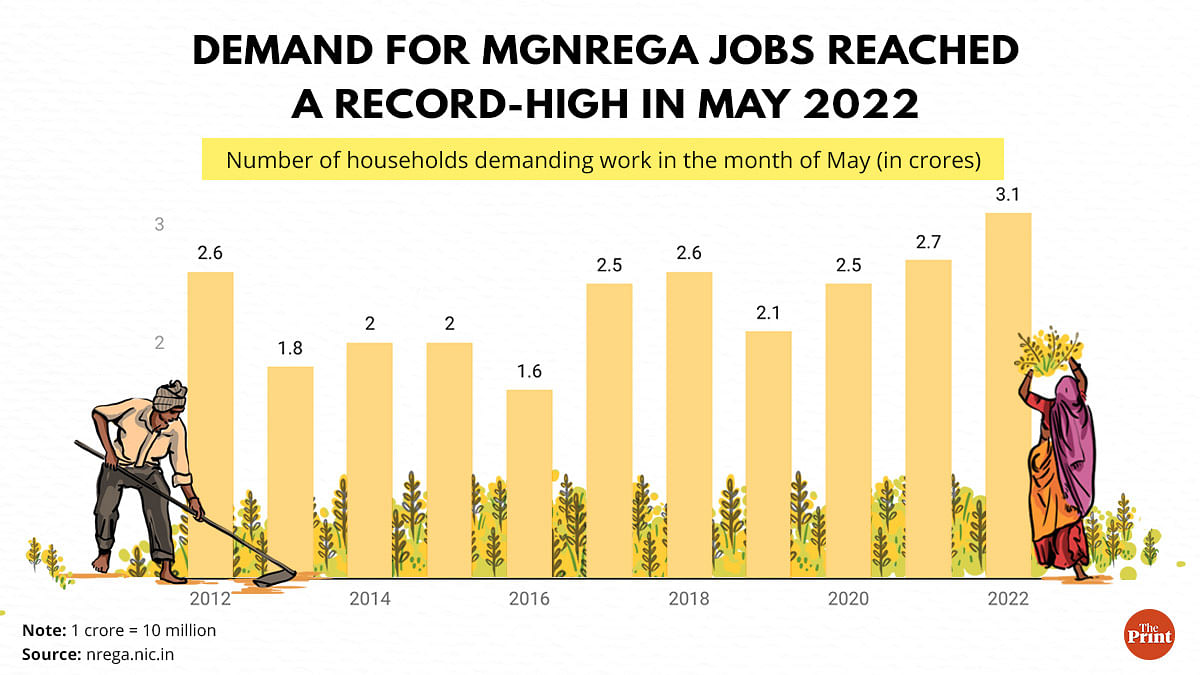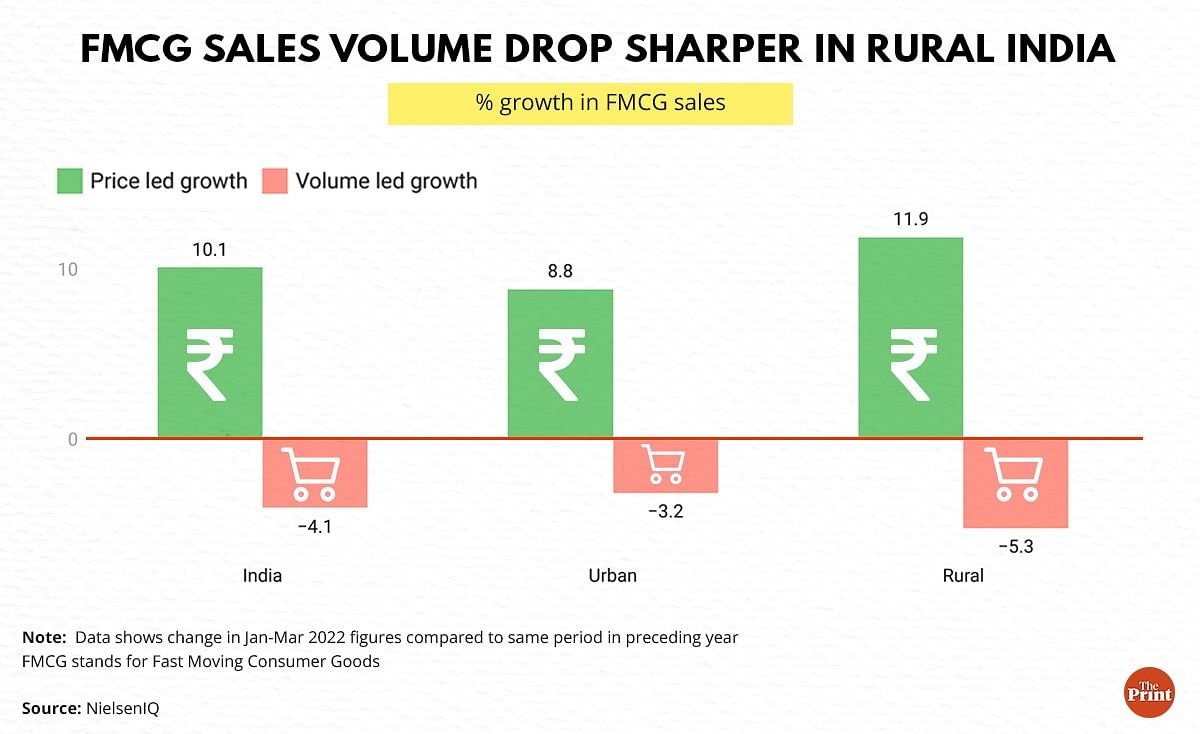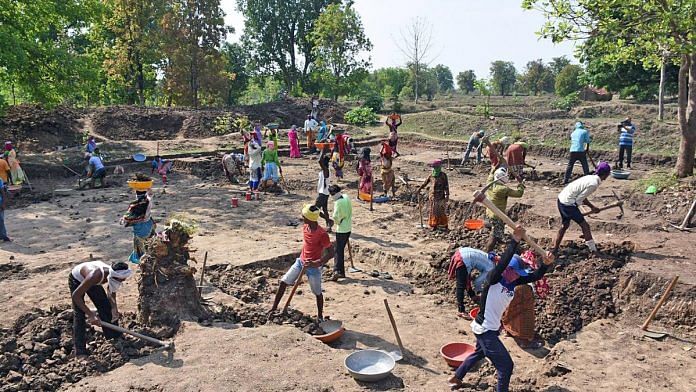New Delhi: Consider a job offer where day wages are less than both statutory minimum wages and market wages for unskilled workers. The work may last for about 10 days at a time, and payments may take more than two weeks, at best, to be credited to bank accounts.
In the punishing heat of summer, one has to work for six to eight hours a day — laying roads or digging a reservoir, gruelling earthwork with a spade or a hoe. What are the chances, hundreds of thousands will queue up for such a job? And what does it say when millions do exactly that?
Launched in 2006 as a social safety net programme, the Mahatma Gandhi National Rural Employment Guarantee Scheme or MGNREGS — which guarantees 100 days of paid work to rural families — created a record of sorts this May.
The number of households demanding work shot up to 3.07 crore — the highest since the inception of the scheme.
Work demanded by households last month was also a staggering 43 per cent higher than the five-year average during the pre-pandemic years (2015-2019).

That rural families are queuing up for a day job that pays poorly — about Rs 209 a day compared to the average daily wage of Rs 337 for unskilled male workers — is a sign of acute distress in rural India.
There aren’t enough jobs around which can pay for the spiralling costs of food.
Read with another abysmal statistic — non-farm rural wages adjusted for inflation, contracting since January 2022 — this signals a livelihood crisis in the hinterland.
The oversupply of labour in rural areas could also imply tepid labour demand across sectors, and the reality that a sizeable proportion of migrant workers are yet to return to cities post-pandemic, due to non-availability of work.

Usually, it is women who outnumber men in schemes like MGNREGS, but it seems even men are queuing up now, said Rajendran Narayanan, assistant professor of economics at Azim Premji University, Bengaluru, who tracks the scheme closely.
“April-May are peak months for MGNREGS demand. And the number (3.07 crore households demanding work) is an underestimation. Our ongoing research shows 32-34 per cent underreporting of person-days of work demanded under the scheme,” Narayanan told ThePrint.
Also Read: ‘Blatant lies’: Mamata writes to PM after Nadda says Bengal didn’t give account of MGNREGA funds
Drop in vehicle registrations, FMCG sales
Beyond the jobs scheme, other indicators, too, point to faltering rural incomes and demand.
Rural India buys more two-wheelers than urban, for instance, but overall, new vehicle registrations in April-May 2022 were 21 per cent lower than the sales recorded during these months in 2018.

While rural families dependent on agricultural earnings may have benefitted from higher prices of grains and oilseeds, it remains unclear how incomes have fared at an aggregate level.
Farm input costs have increased sharply in recent years while adverse climate events have led to a drop in production of grains and perishables.
Global markets research firm Nomura had in a 10 June research note estimated a sharp 11 per cent increase in farm input costs for the ongoing kharif crop season, which compares with the 5.8 per cent average increase in government-announced minimum support prices.
The stress in rural incomes is also evident from the drop in sales volumes for fast moving consumer goods (FMCG) brands, which include staples like edible oils and wheat flour, and personal-care items like soaps and shampoos.
“Due to unprecedented inflation, FMCG market value growth has significantly slowed down and volumes are declining… The impact is more pronounced in rural (areas), where even value growth has started declining,” consumer goods company Hindustan Unilever Ltd said in an earnings call late April.

Decline in consumption more stark in rural markets
The decline in consumption is echoed across all zones and town classes, but it is more prominent in rural markets, which witnessed a 5.3 per cent dip in sales volumes between January and March 2022, year-on-year (compared to a 3.2 per cent contraction in urban markets).
This is the largest consumption slowdown over the past three quarters, consumer research firm NielsenIQ said early June.
“Our interactions with poor and ultra-poor households in rural areas indicate declining asset ownership, rising debt and less investment in productive assets like land,” said John Paul, director at The/Nudge Centre for Rural Development, a non-profit.
(Edited by Gitanjali Das)
Also Read: Is an urban job scheme possible? Modi govt unsure but 6 opposition states & Himachal show the way



